Martha Clippinger: Vibrating Boundaries
January 21st - February 19th
The recent works in this exhibition-quilts, weavings, painted wood constructions, and ceramics- explore Martha Clippinger’s on-going interest in color relationships, abstract geometric designs, and making objects that blur the border between art and craft.
The exhibition title Vibrating Boundaries is drawn from Josef Alber’s portfolio The Interaction of Color, a series of silkscreen plates that demonstrate the color exercises he developed while teaching at Black Mountain College between 1933 and 1949. Albers insisted on the need to observe colors as they really are, and he noted that colors will change in appearance depending on their context: when certain colors are places together, they appear to vibrate.
Drawing from Alber’s ideas, Clippinger does not select the palette for a work in advance, but rather she designs by intuitively putting colors side by side fabrics, skeins of wool, paint, glazes to see how they interact, sometimes embracing vibration. Her works present opportunities for the viewer to observe the interrelatedness of color. As you explore the exhibition, consider how colors behave in the contexts of the different materials and how they transform depending on their surrounding environments.

Tumble Dry, 2018, machine pieced and hand quilted fabric, 57" x 40".

Tapete collage, 2016, acrylic and fabric on amate paper, 27" x 19.25". text transcribed above.
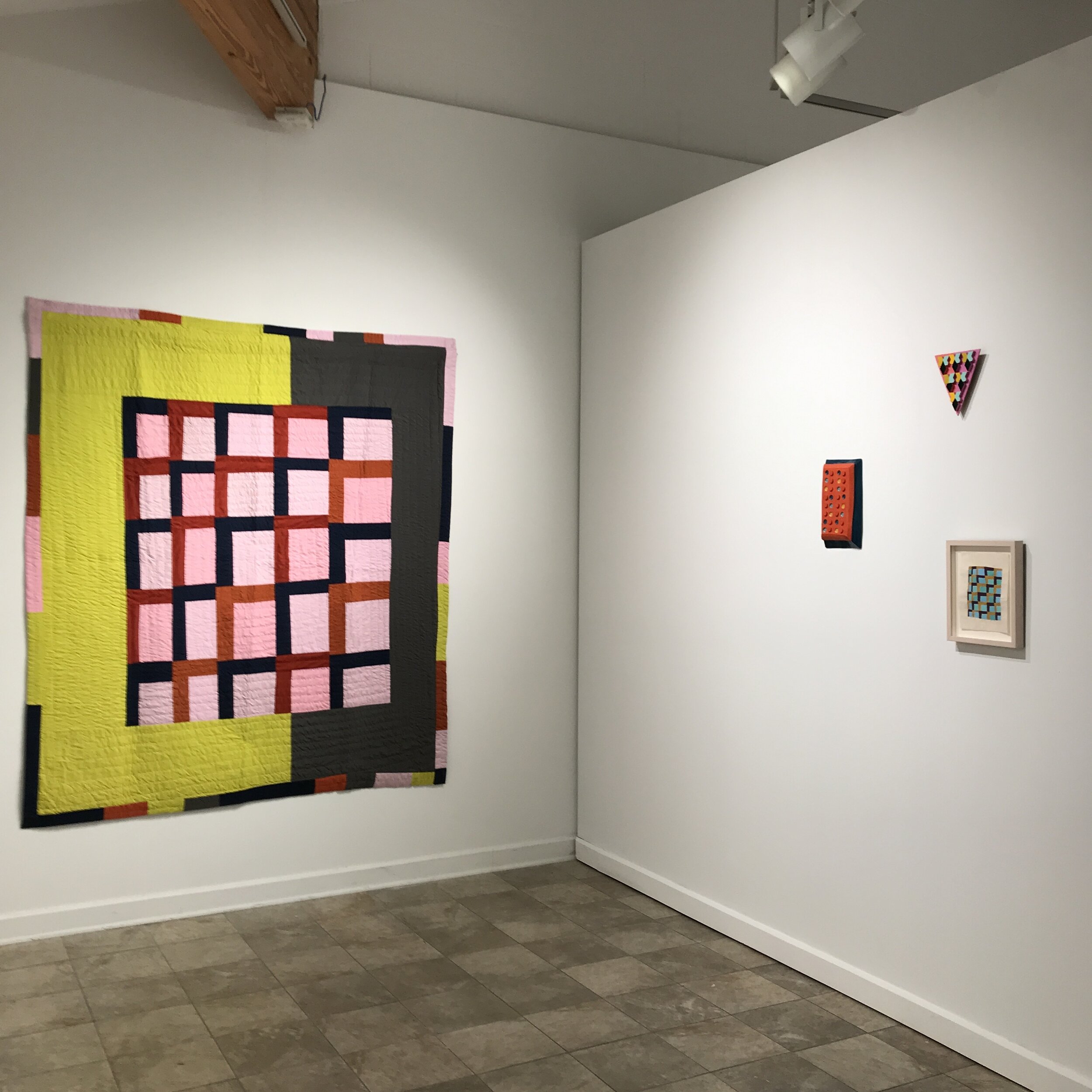
left: Cuadricula quilt, 2019, machine pieced and hand quilted fabric, 68" x 64".

Flock, 2016, acrylic on wood, 7.5" x 7" x 1.5".

Kohler dots, 2019, acrylic and glaze on porcelain, 12" x 7".
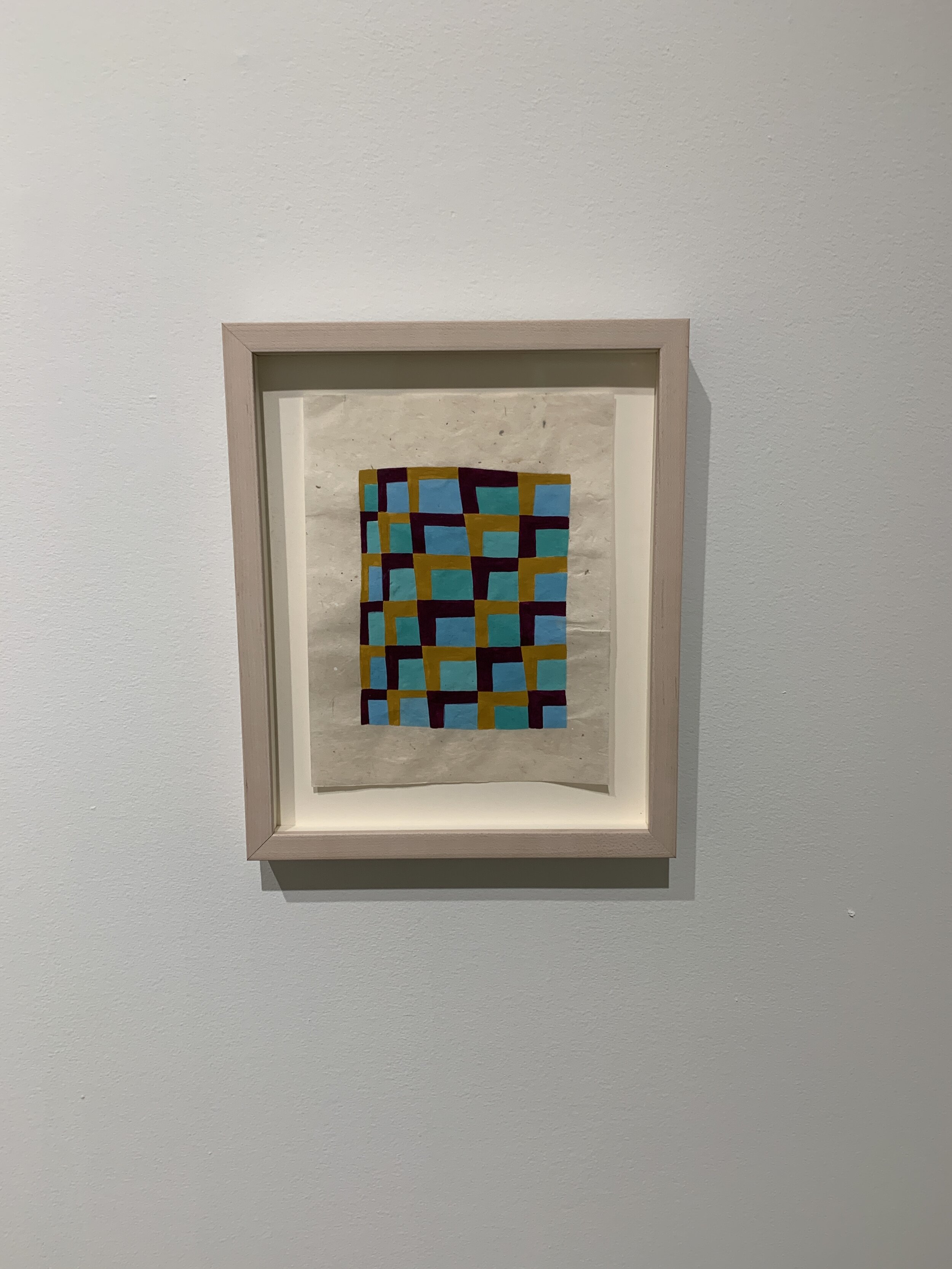
Cuadricula sketch, 2017, gouache on handmade paper, 12" x 10" (framed).
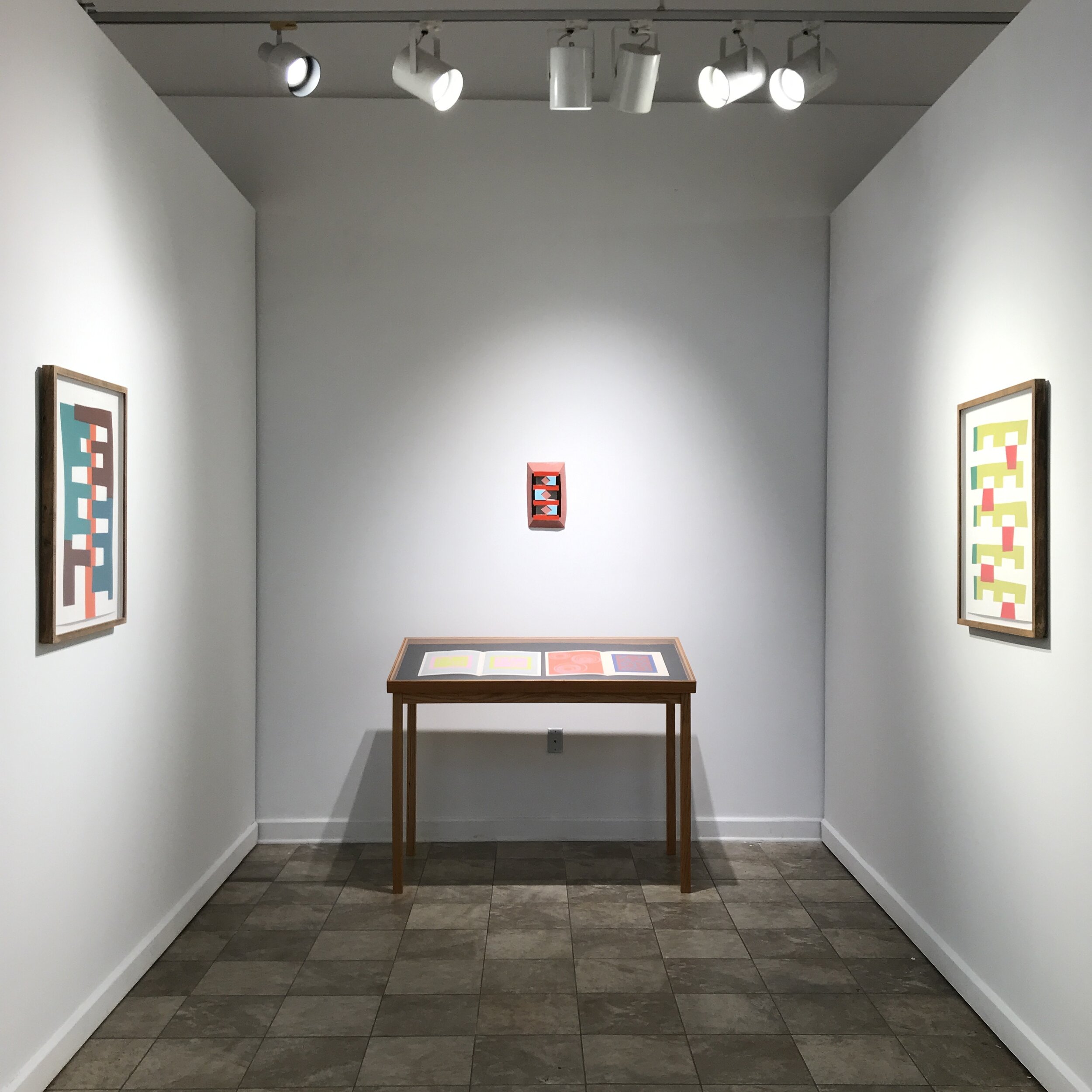
left: Zipper, 2015, screen print on paper, produced with master printer Bill Fick, Durham Supergraphic, 28" x 22". center: Cut through, 2020, acrylic and tinted slip on porcelain, 17" x 12" x 1.5". right: Flapper, 2015, screen print on paper, produced with master printer Bill Fick, Durham Supergraphic, 27" x 23".

Zipper, 2015, screen print on paper, produced with master printer Bill Fick, Durham Supergraphic, 28" x 22".
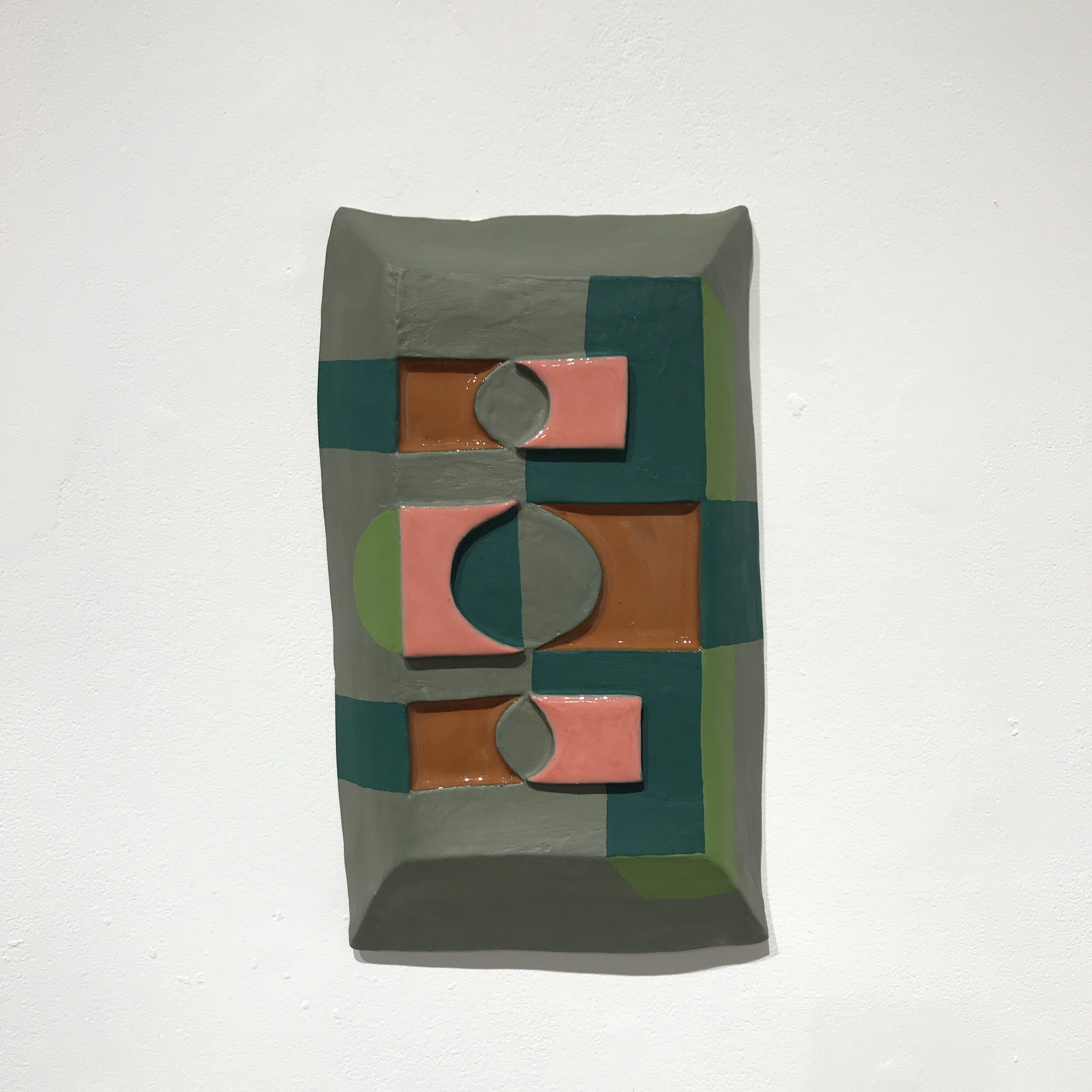
Abrir, 2019, acrylic, tinted slip, and glaze on porcelain, 12" x 7".

Flapper, 2015, screen print on paper, produced with master printer Bill Fick, Durham Supergraphic, 27" x 23".
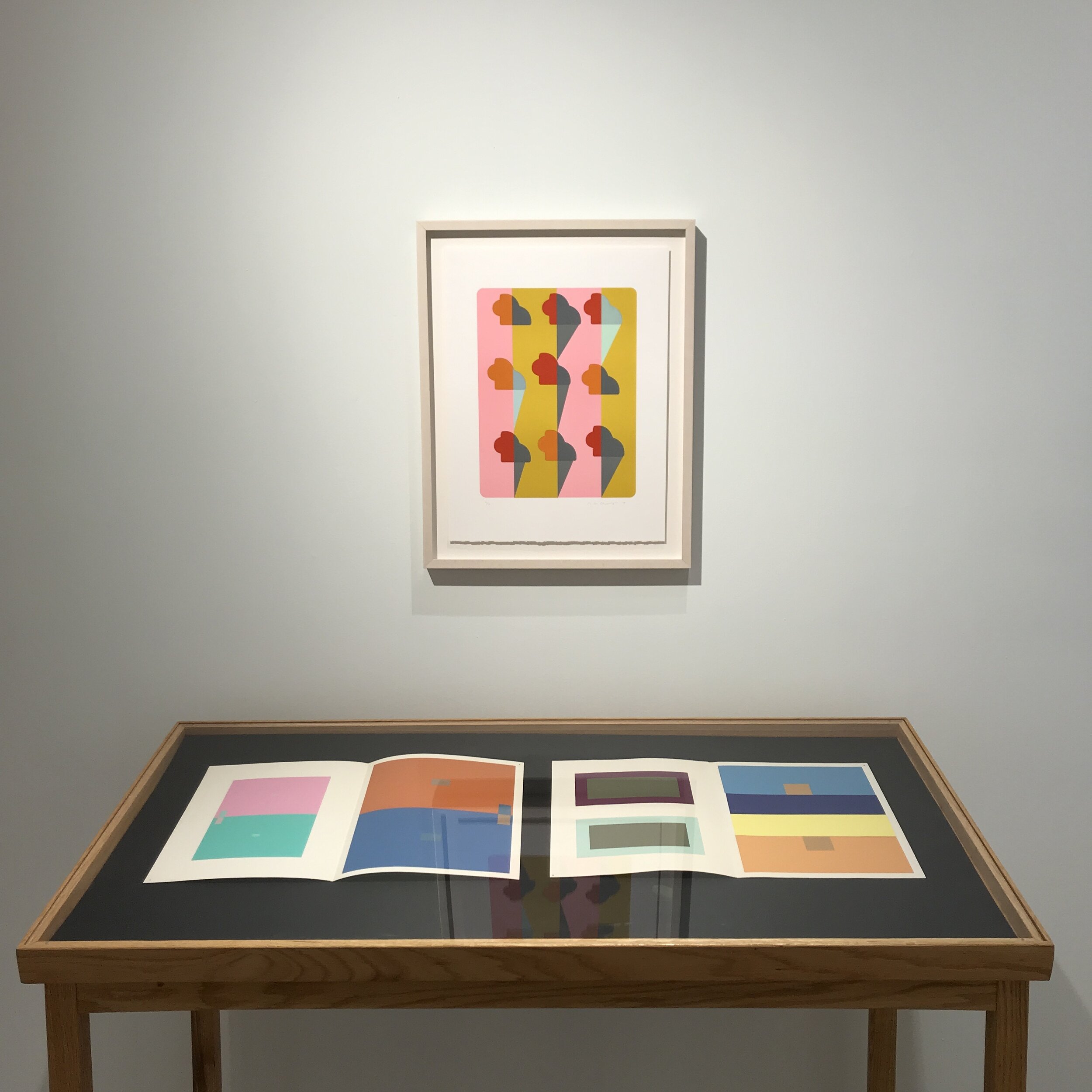
top: Puzzlin evidence, 2017, lithograph produced with master printer Brian Garner, Durham Supergraphic, 19" x 15" (framed).
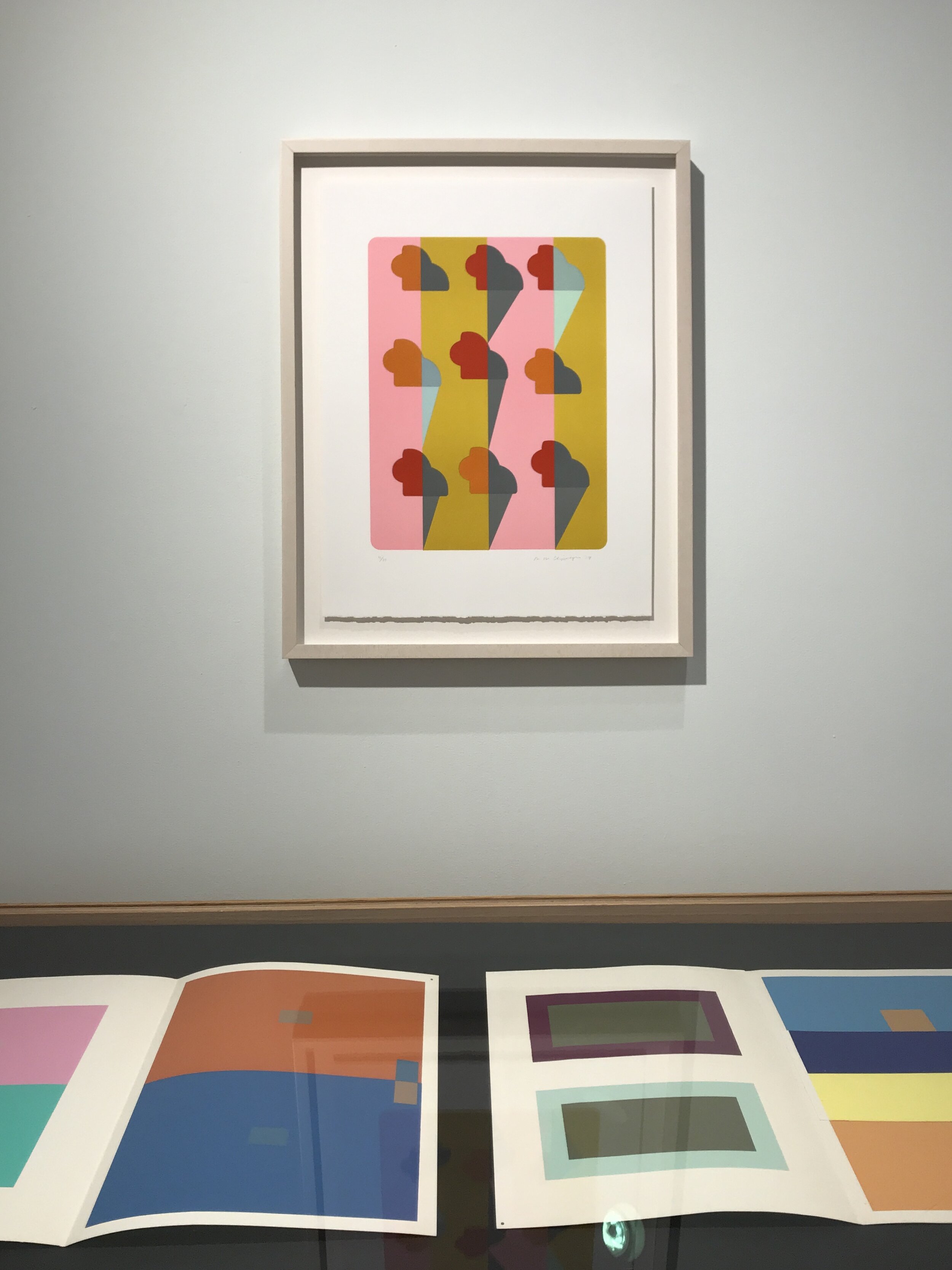
top: Puzzlin evidence, 2017, lithograph produced with master printer Brian Garner, Durham Supergraphic, 19" x 15" (framed).

left: Xnis xnia, 2016, hand dyed wool, woven by Agustin Contreras Lopez, 71.5" x 23". right: Pinwheel, 2012, acrylic and fabric on wood, 11" x 11" x 1".
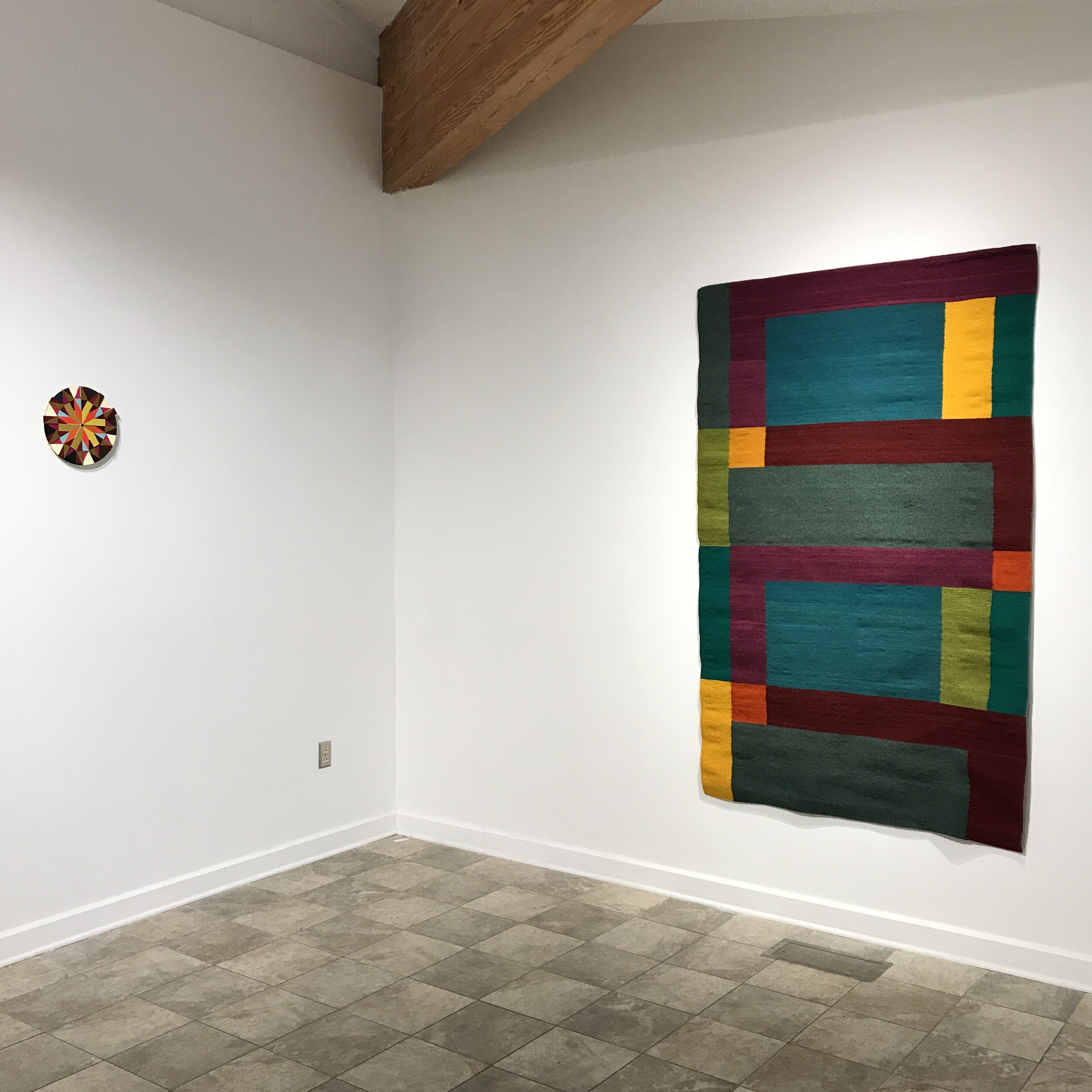
left:Pinwheel, 2012, acrylic and fabric on wood, 11" x 11" x 1". right: Untitled, 2019, hand dyed wool, woven by Agustin Contreras Lopez, 72" x 48".

left: Step-fret, 2020, hand dyed wool, woven by Licha Gonzalez Ruiz, 58" x 37.5". right: Puzzlin evidence, 2017, lithograph produced with master printer Brian Garner, Durham Supergraphic, 19" x 15" (framed).
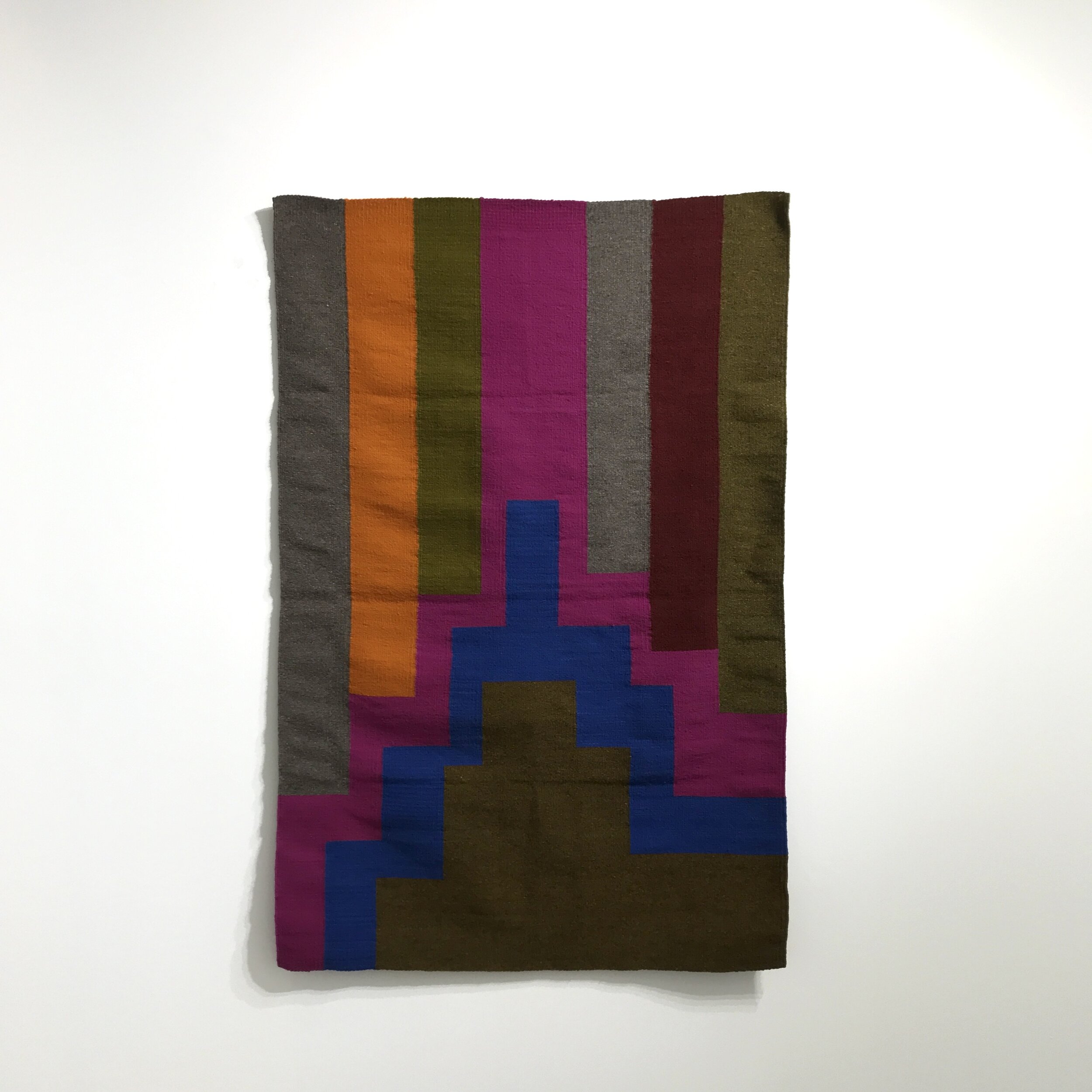
Step-fret, 2020, hand dyed wool, woven by Licha Gonzalez Ruiz, 58" x 37.5".

left: Vibrations, 2019, machine pieced and hand quilted fabrics, 65" x 73". center: 3 pinwheels, 2019, glazed ceramic, acrylic and wood, 2" x 24.75" x 6". center right: Hex, 2018, acrylic and fabric on wood, 17" x 15". right: Untitled, 2020, hand dyed wool, woven by Licha Gonzalez Ruiz and Agustin Contreras Lopez, 48" x 30.5".
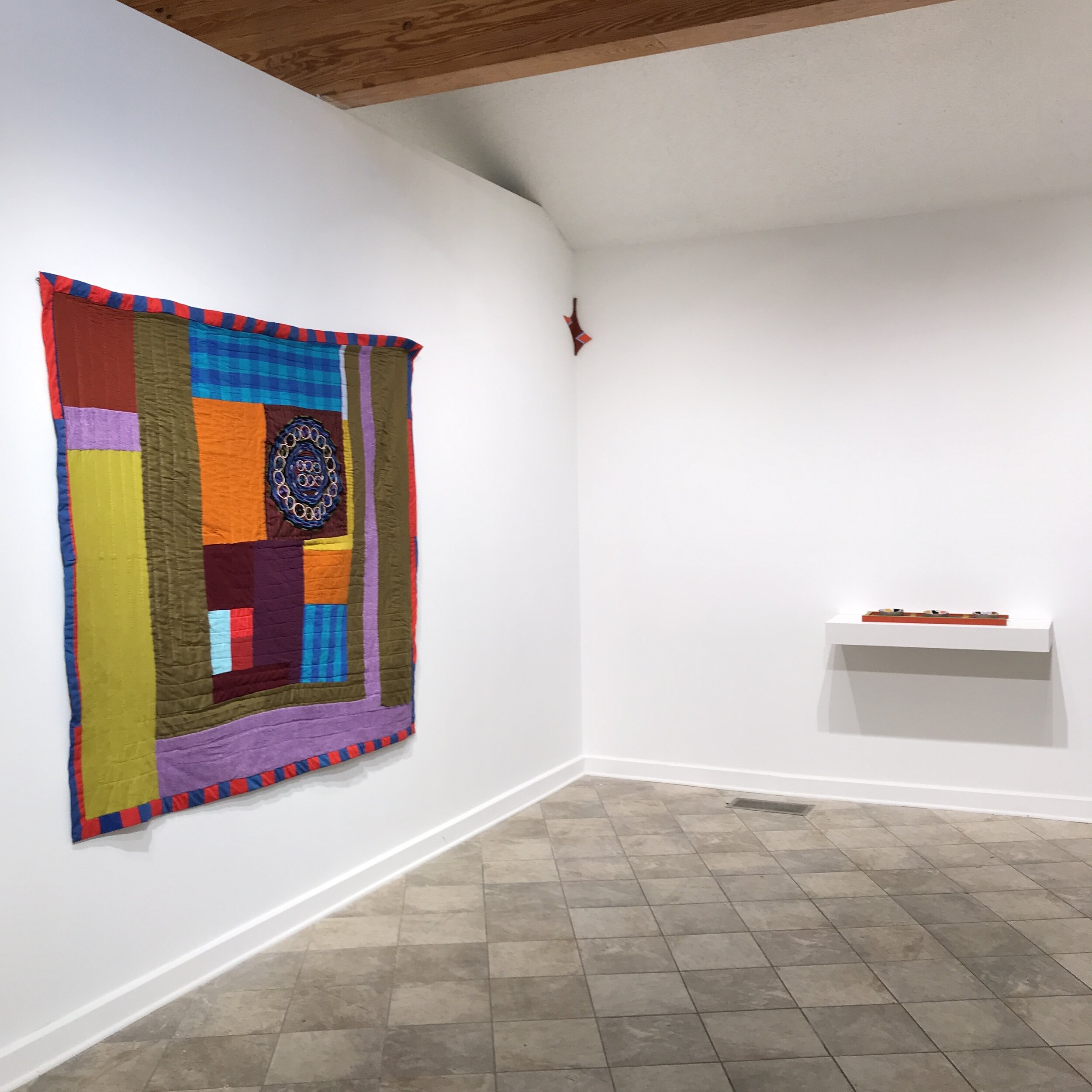
left: Vibrations, 2019, machine pieced and hand quilted fabrics, 65" x 73". center top: Double dipper, 2013, acrylic on wood. right: 3 pinwheels, 2019, glazed ceramic, acrylic and wood, 2" x 24.75" x 6".
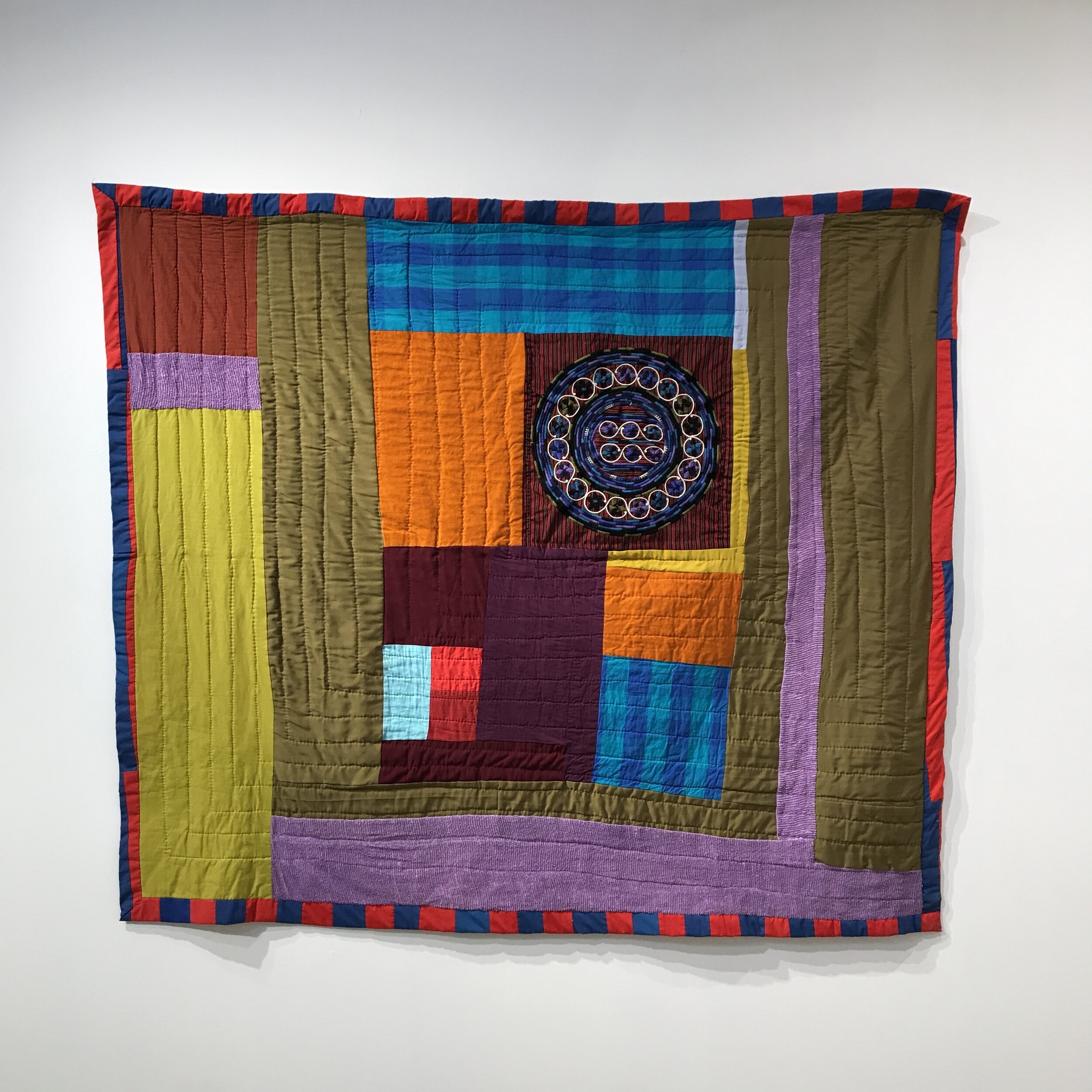
Vibrations, 2019, machine pieced and hand quilted fabrics, 65" x 73".

Double dipper, 2013, acrylic on wood.

3 pinwheels, 2019, glazed ceramic, acrylic and wood, 2" x 24.75" x 6".

3 pinwheels, 2019, glazed ceramic, acrylic and wood, 2" x 24.75" x 6".

Hex, 2018, acrylic and fabric on wood, 17" x 15".

Untitled, 2020, hand dyed wool, woven by Licha Gonzalez Ruiz and Agustin Contreras Lopez, 48" x 30.5".

Artist Statement:
The intersection of fine art and craft has long been an interest of mine, and in recent years, the textile traditions of weavings and quilts have provided fertile ground for me to consider geometry and color relationships.
In 2014, I began an ongoing collaboration with weavers Licha Gonzalez Ruiz and Agustin Contreras Lopez of Teotitlan del Valle, Oaxaca, Mexico to create tapetes (Spanish for “rugs”). The warps and wefts of the woven tapete structure inspire designs composed of horizontals and verticals, and the intense hues of the woolen yarns, hand dyed by Licha and Agustin, contribute to the works’ highly saturated palettes.
I use gouache and watercolor studies as a jumping off point for the tapetes. I often select the rug’s colors in person, based on the dyed yarn that they have available in their workshop. This frequently leads to shifts in color from the original design, but it is the observation of color relationships that engages and stimulates me throughout all of my art making processes.
My quiltmaking incorporates a similar process of observing “readymade” colors whereby I gather reclaimed fabrics, study their colors and consider potential pairings, and then piece them together. The construction of the quilts is much more improvisatory than the tapetes, which I design but do not weave. The resulting compositions present rhythmic geometric arrangements of varied colors, textures, and patterns where the fabrics’ origins contribute to narratives and histories behind each quilt.
Anni Albers’s discussion of the “pliable plane” and textiles relationship to architecture inspires these works. That they may function as floor or bed coverings, or as wall hangings creates an open-endedness that I love. I enjoy seeing my work function in both realms, for it blurs the borders and flattens the hierarchies between art and craft.
